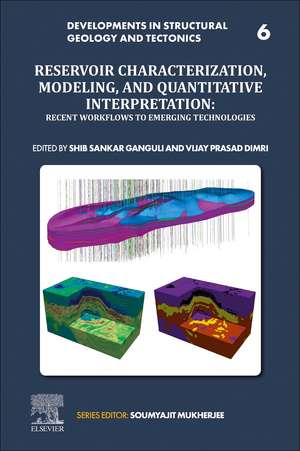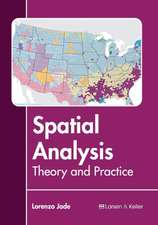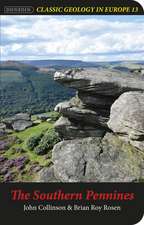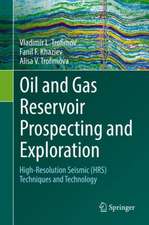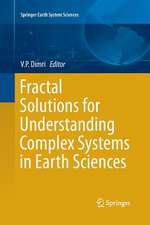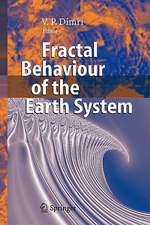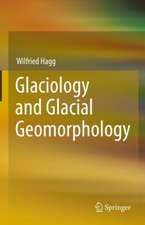Reservoir Characterization, Modeling and Quantitative Interpretation: Recent Workflows to Emerging Technologies: Developments in Structural Geology and Tectonics, cartea 6
Editat de Shib Sankar Ganguli, V. P. Dimrien Limba Engleză Paperback – 24 oct 2023
This will be especially useful for field scientists in collecting and analyzing field data, prospect evaluation, developing reservoir models, and adopting new technologies to mitigate exploration risk. They will be able to solve the practical and challenging problems faced in the field of reservoir characterization, as it will offer systematic industrial workflows covering every aspect of this branch of Earth Science, including subsurface geoscientific perspectives of carbon geosequestration. This resource is a 21st Century guide for exploration geologists, geoscience students at postgraduate level and above, and petrophysicists working in the oil and gas industry.
- Covers the latest and most effective technologies in reservoir characterization, including Avo analysis, AVAz inversion, wave field separation and Machine Learning techniques
- Provides a balanced blend of both theoretical and practical approaches for solving challenges in reservoir characterization
- Includes detailed industry-standard practical workflows, along with code structures for algorithms and practice exercises
Preț: 720.08 lei
Preț vechi: 940.46 lei
-23% Nou
Puncte Express: 1080
Preț estimativ în valută:
137.79€ • 144.16$ • 114.46£
137.79€ • 144.16$ • 114.46£
Carte tipărită la comandă
Livrare economică 27 martie-10 aprilie
Preluare comenzi: 021 569.72.76
Specificații
ISBN-13: 9780323995931
ISBN-10: 0323995934
Pagini: 516
Dimensiuni: 152 x 229 x 30 mm
Greutate: 0.69 kg
Editura: ELSEVIER SCIENCE
Seria Developments in Structural Geology and Tectonics
ISBN-10: 0323995934
Pagini: 516
Dimensiuni: 152 x 229 x 30 mm
Greutate: 0.69 kg
Editura: ELSEVIER SCIENCE
Seria Developments in Structural Geology and Tectonics
Cuprins
1. Reservoir Characterization, State of the art, challenges and ways forward
2. 3D Seismic attribute visualization and analysis for fault characterization
3. Modeling Natural Fracture Networks and Data Assimilation using multipoint geostatistics and machine learning based geomechanical inferences
4. Enhanced artificial intelligence workflow for predicting production within the Bakken formation
5. Relative seismic inversion: A quick way to understand quantitative potential of the data
6. Striking a balance: Seismic inversion with model- and data-driven priors
7. AVAz inversion of 4D seismic data for fracture characterization in the Stocker field
8. Modeled AVAZ responses of multiple fractured medium
9. Seismic AVO analysis for reservoir characterization
10. 4D Seismic for Reservoir Management
11. Rock physics bridging the gap between seismic data and reservoir properties
12. Effective Elastic Medium Properties Using Digital Rocks: Existing Practice and Emerging Trends
13. Role of critical data for Geomechanical Modeling & Characterization of Future CO₂ Storage Sites
14. Geoscientific Approach for Carbon Sequestration Evaluation: A Pragmatic Perspective
15. Source rock characterization: Implications to hydrocarbon potential
16. Multiscale imaging technologies for shale reservoir characterization
2. 3D Seismic attribute visualization and analysis for fault characterization
3. Modeling Natural Fracture Networks and Data Assimilation using multipoint geostatistics and machine learning based geomechanical inferences
4. Enhanced artificial intelligence workflow for predicting production within the Bakken formation
5. Relative seismic inversion: A quick way to understand quantitative potential of the data
6. Striking a balance: Seismic inversion with model- and data-driven priors
7. AVAz inversion of 4D seismic data for fracture characterization in the Stocker field
8. Modeled AVAZ responses of multiple fractured medium
9. Seismic AVO analysis for reservoir characterization
10. 4D Seismic for Reservoir Management
11. Rock physics bridging the gap between seismic data and reservoir properties
12. Effective Elastic Medium Properties Using Digital Rocks: Existing Practice and Emerging Trends
13. Role of critical data for Geomechanical Modeling & Characterization of Future CO₂ Storage Sites
14. Geoscientific Approach for Carbon Sequestration Evaluation: A Pragmatic Perspective
15. Source rock characterization: Implications to hydrocarbon potential
16. Multiscale imaging technologies for shale reservoir characterization
